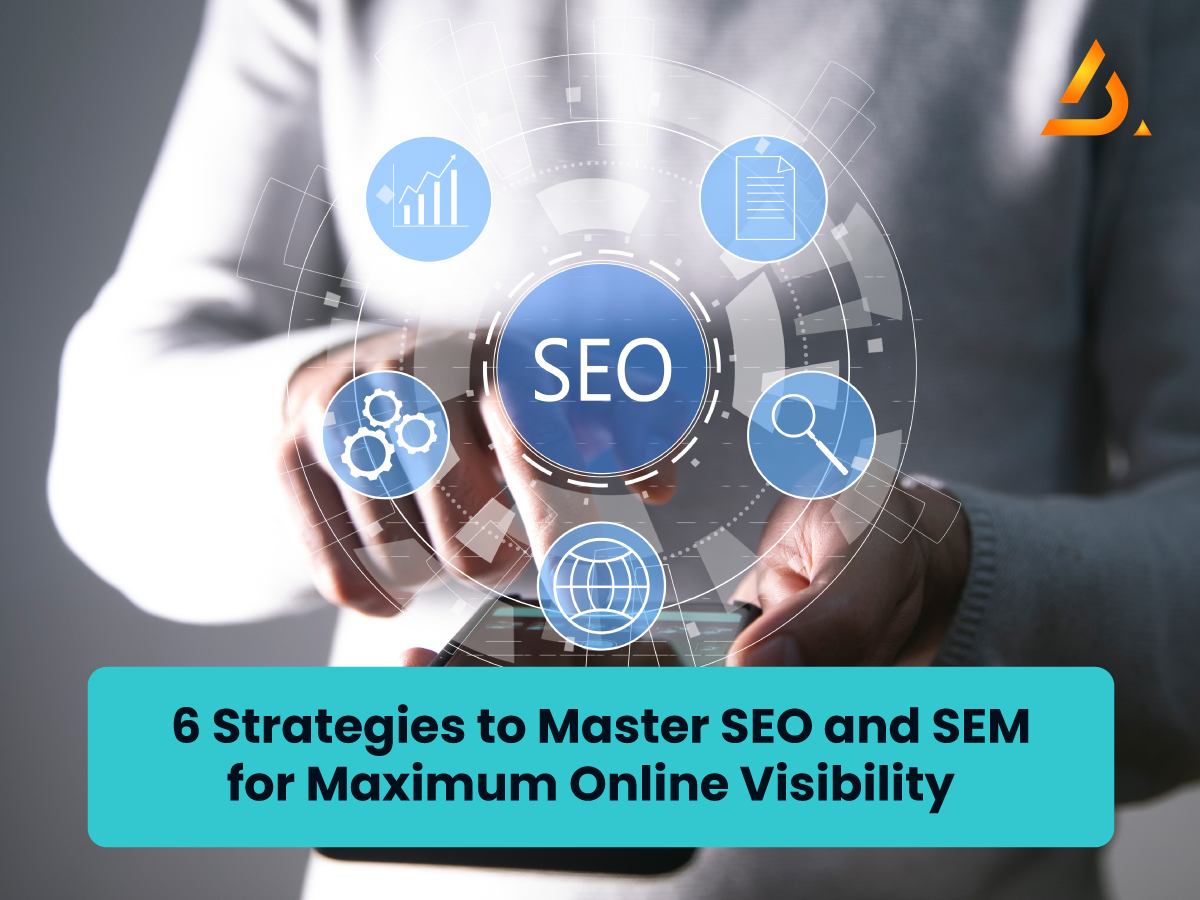Lost in the SEO vs. SEM Maze? We’ve Got You Covered
Do you ever get confused by the jargon of digital marketing? You’re not alone! Two terms that constantly trip people up are SEO and SEM. They often get thrown around together, but they have very different purposes.
This beginner-friendly guide will be your compass through the world of SEO and SEM. We’ll break down exactly what each term means, highlight their critical differences, and show you how they can boost your online presence.
Stop feeling lost in the land of acronyms! Read on to discover the power of SEO and SEM and take your digital marketing strategy to the next level.
- Decoding the Terminology: SEO vs. SEM
Upon casual observation, SEO and SEM are the same because they both deal with improving company rankings on the internet.
With SEO being a process of strategies oriented towards increasing the site’s rank on the results list, SEM may be defined as a combination of SEO and PPC of targeted traffic and exposure.
SEO applies a complex method of enhancing a website’s content, framework, and functionality to attain any SERPs.
Some of these are keyword identification, on-site optimization, technical SEO, and link acquisition techniques to increase the site’s relevance and importance in the eyes of search engines.
On the other hand, SEM is a much broader term for marketing activities involving paid media like PPC advertising, display ads, and retargeting.
Despite the differences, SEM uses paid methods to provide instant exposure and attract people to the specific website.
- Unveiling the Components: Organic vs. Paid Search
Analyzing the nature of SEO and disentangling its constituents, one discovers that this process mainly employs organic methods:
- Optimization of content and text,
- Site structure improvement,
- Getting backlinks from other authoritative websites
Organic search optimization refers to enhancing the number and quality of a website’s search results page rankings, naturally or organically, without using paid advertising but through such elements as writing articles.
While SEO focuses solely on optimizing a website’s organic visibility to attain higher rankings in search engine results and attract quality traffic, SEM encompasses a broader approach that integrates both paid and organic strategies to drive traffic to a website or online portal.
As businesses seek to enhance their online presence and attract potential customers, partnering with a reputable digital marketing agency USA can provide invaluable expertise and resources to navigate the complexities of SEO and SEM effectively.
Some forms of paid search advertising, such as PPC, involve bidding on specific keywords or phrases and delivering instant traffic to a business website by placing ads relevant to terms used by users searching on the internet.
- The Role of PPC in SEM
SEM is synonymous with PPC (Pay-per-click) advertising, which provides marketers with direct access to the appropriate placement within the SERPs for specific keywords.
PPC campaigns enable a firm to bid on any keyword related to the business and provide ads to users, specifically those seeking information about the business offering.
It’s worth noting that initially, PPC was viewed as separate from SEM. However, recent developments suggest that PPC now encapsulates the ‘paid’ aspect of search engine marketing campaigns.
As the landscape evolves, businesses seeking to leverage SEM effectively may find partnering with a reputable digital marketing agency Mississauga invaluable in navigating these changes and optimizing their strategies.
Being an internet marketing tool, PPC advertising enables organizations to effectively market their products and services to the targeted audiences, such that the success of the campaigns in terms of traffic, conversion, and overall returns can easily be measured by such values as click-through rate, conversion rate, and ROI respectively.
- Navigating the Landscape: SEO, SEM, and PPC
Understanding the relationship between SEO, SEM, and PPC is essential in navigating the current digital marketing environment.
SEO is a slow process that, with the help of optimized content and link building, brings a constant flow of the target audience, while SEM and PPC provide more laser-like, targeted traffic at a given price.
While SEO fosters sustainable organic growth over time, SEM and PPC provide immediate results and measurable ROI, making them ideal for short-term promotional campaigns or product launches.
However, a comprehensive digital marketing strategy may incorporate elements of both SEO and SEM to maximize online visibility and drive qualified website traffic.
- Crafting Your Strategy: Choosing Between SEO and SEM
Hence, when businesses need to decide on the type of digital marketing they want, they must compare SEO and SEM depending on the target, cost, and competition factors at their disposal.
At the same time, SEO takes time to deliver good results that last for an extended period. SEM and PPC give instant results with measurable and substantial returns on investment, and they can used where there is a need to do a short-term promotion on a product or a service.
Factors to consider when choosing between SEO and SEM include:
- Goals: Determine whether your primary objective is to achieve long-term organic growth or drive immediate traffic and conversions.
- Budget: Consider your budgetary constraints and the cost-effectiveness of each strategy, as SEM and PPC typically require a financial investment.
- Website Performance: Assess your website performance and search engine rankings to determine whether SEO or SEM is the most appropriate strategy to achieve your objectives.
- Data Requirements: Evaluate your data needs and the level of insights provided by SEO and SEM strategies. SEM and PPC offer real-time data and performance metrics that can inform decision-making.
- Harnessing the Power of Integration: SEO and SEM Synergy
Instead of naively trying to categorize SEO and SEM as two different tactics, more innovative marketing minds are learning that these two approaches are beneficial when they work hand in hand.
Through SEO, coordination with the targeted SEM campaigns proves to help enhance the marketing mix by achieving the needed business goals and objectives and defining the whole picture of the target market.
Integrated SEO and SEM strategies offer several benefits, including:
- Enhanced Visibility: The integration of organic and paid search campaigns ultimately leads to more potential for the brand to show up in search engine results, improving the chances of its online visibility.
- Targeted Traffic: SEM enables the specification of specific keywords and people, leading to the visit of people who are presumably interested in the company’s product, increasing the possibility of returns from the website.
- Data Insights: Businesses can use SEM and PPC information and performance statistics since these media present real-time information and less dramatic fluctuations to improve the performance of their website.
- Comprehensive Marketing Approach: “Therefore, through implementing both SEO and SEM the firms/ organizations are in a position of developing strategies that will tap from the benefits of the two strategies in terms of;”
Final Thoughts
As a result, SEO and SEM reflect two significant aspects of digital marketing that provide different opportunities and add value to the perception and attraction of qualified traffic.
With, this article explains the differences between SEO and SEM and how businesses can apply the combined approach to promote sustainable growth and lead to competitors in the context of driving digital marketing strategies in the competitive environment of the online world.
Organic and paid search marketing is commonly used as a combined method, which allows to focus on the target audiences and get high.
Businesses can enhance their online presence, attract qualified leads, and experience sustainable growth in the highly saturated digital environment.










